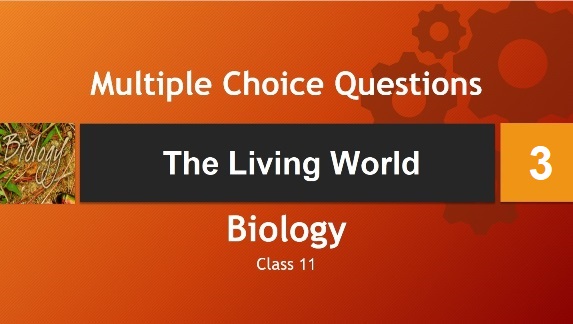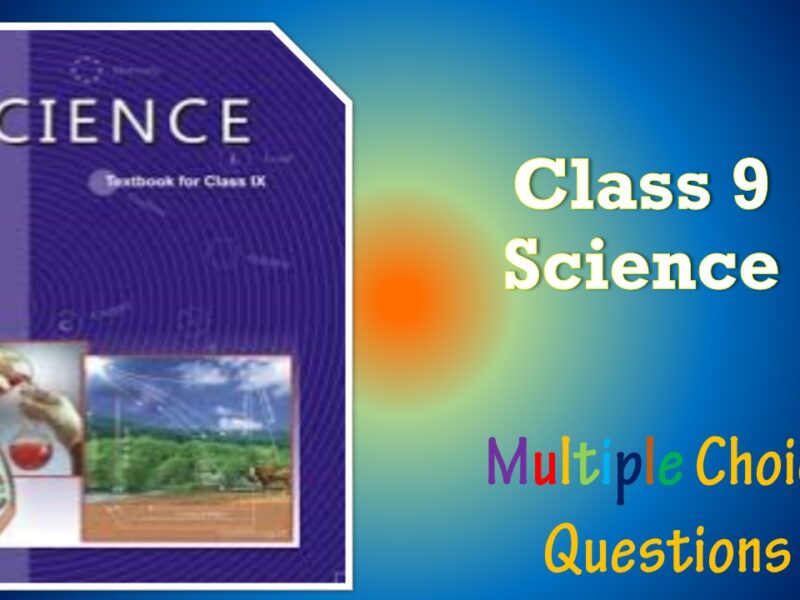CBSE Class 11 Chemistry Chapter 1 Biology The Living World Multiple Choice Questions with Answers. MCQ Questions Class 11 Biology The Living World with Answers was Prepared Based on Latest Exam Pattern. Students can solve NCERT Class 11 Biology The Living World MCQs with Answers to know their preparation level.
Students who are searching for NCERT MCQ Questions for Class 11 Biology The Living World with Answers are compiled here to get good practice on all fundamentals. Know your preparation level on MCQ Questions for Class 11 Biology with Answers. You can also verify your answers from our provided MCQ Class 11 Biology The Living World with Answers. So, ace up your preparation with MCQ of Chapter 1 Biology Objective Questions.
MCQ Questions Class 11 Biology The Living World with Answers - Set - 3
Question 1:
Question. ICBN stands for
(a) International Code of Botanical Nomenclature
(b) International Congress of Biological Names
(c) Indian Code of Botanical Nomenclature
(d) Indian Congress of Biological Names.
Correct Answer – (A)
Question 2 :
Question. Nomenclature is governed by certain universal rules. Which one of the following is contrary to the rules of nomenclature?
(a) The names are written in Latin and are italicised.
(b) When written by hand the names are to be underlined.
(c) Biological names can be written in any language.
(d) The first word in a biological name represents the genus name and the second is a specific epithet.
Correct Answer – (C)
Question 3 :
Question. Select the correctly written scientific name of Mango which was first described by Carolus Linnaeus.
(a) Mangifera Indica
(b) Mangifera indica Car. Linn.
(c) Mangifera indica Linn.
(d) Mangifera indica
Correct Answer – (C)
Question 4 :
Question. Biological organisation starts with
(a) cellular level
(b) organismic level
(c) atomic level
(d) submicroscopic molecular level.
Correct Answer – (D)
Question 5 :
Question. Linnaeus system of classification is
(a) Natural
(b) Artificial
(c) Phylogenetic
(d) Progressive
Correct Answer – (B)
MCQ Questions Class 11 Biology The Living World with Answers
Question 6 :
Question. Binomial nomenclature was introduced by
(a) Linnaeus
(b) Darwin
(c) Bentham and Hooker
(d) Aristotle
Correct Answer – (A)
Question 7 :
Question. Which of the following is against the rules of ICBN?
(a) Hand written scientific names should be underlined.
(b) Every species should have a generic name and a specific epithet.
(c) Scientific names are in Latin and should be italicized.
(d) Generic and specific names should be written starting with small letters.
Correct Answer – (D)
Question 8 :
Question. The basic unit of classification is
(a) genus
(b) species
(c) variety
(d) subspecies
Correct Answer – (B)
Question 9 :
Question. The living organisms can be exceptionally distinguished from the non-living things on the basis of their ability for
(a) interaction with the environment and progressive evolution
(b) reproduction
(c) growth and movement
(d) responsiveness to touch.
Correct Answer – (D)
Question 10 :
Question. Which one of the following aspects is an exclusive characteristic of living things?
(a) Isolated metabolic reactions occur in vitro
(b) Increase in mass from inside only
(c) Perception of events happening in the environment and their memory.
(d) Increase in mass by accumulation of material both on surface as well as internally.
Correct Answer – (C)
- NCERT Solutions Class 11 Chemistry Chapter 1 : Some Basic Concepts of Chemistry
- NCERT Solutions Class 11 Chemistry Chapter 2 : Structure Of The Atom
- NCERT Solutions Class 11 Chemistry Chapter 3 : Classification of Elements and Periodicity in Properties
- NCERT Solutions Class 11 Chemistry Chapter 4 : Chemical Bonding and Molecular Structure
- NCERT Solutions Class 11 Chemistry Chapter 5 : States of Matter
- NCERT Solutions Class 11 Chemistry Chapter 6 : Thermodynamics
- NCERT Solutions Class 11 Chemistry Chapter 7 : Equilibrium
- NCERT Solutions Class 11 Chemistry Chapter 8 : Redox Reactions
- NCERT Solutions Class 11 Chemistry Chapter 9 : Hydrogen
- NCERT Solutions Class 11 Chemistry Chapter 10 : The s-Block Elements
- NCERT Solutions Class 11 Chemistry Chapter 11 : The p-Block Elements
- NCERT Solutions Class 11 Chemistry Chapter 12 : Organic Chemistry: Some Basic Principles and Techniques
- NCERT Solutions Class 11 Chemistry Chapter 13 : Hydrocarbons
- NCERT Solutions Class 11 Chemistry Chapter 14 : Environmental Chemistry




